Iron heroes of Lutsk
There was a breakthrough preparation.
The first day the Russian artillery carried out artillery preparation, striking the enemy’s defensive positions, and on the night of 23, in May, she wore shrapnel fire - preventing any damage that had been done before. Under the cover of artillery fire were transferred to the river. Osinische battalions 13 th and 14 th rifle regiments.
From 4 hours of 23 on May, the artillery continued to smash the enemy’s first lane, ending the destruction - and earning the recognition of shooters, with a huge rise waiting for the desired minute of their attack.
The plan of an artillery attack was carried out as per notes. It was necessary only to regulate the time and tension of the fire, to transfer the fire of one group to the aid of the neighboring group, to direct fire on the Zabolottsy to promote the 15 Infantry Division, to fight the battery, etc.
Russian artillery worked so selflessly, skillfully and systematically, that in 29 hours everything that was created by engineering and months of Austrian work was reduced to dust.
In 9 hours to the accompaniment of hurricane fire of their artillery, the arrows rushed to the attack.
The commander of the 13 Infantry Regiment Colonel P. P. Nepenin moved the 3 battalion to assault and, instantly breaking through both lines of the enemy defense, 1 battalion entrenched in the captured positions, and 2 battalions attacked to the south - striking the Austrians on the flank and til. By the 11 watch, the 1-I band of enemy defenses, up to and including the “labyrinth,” was in the hands of iron shooters.
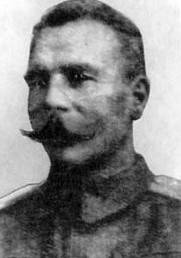
P.P. Nepenin
The artillery of the commander of the 2 division of the 4 rifle artillery brigade of colonel V. F. Piskorsky concentrated fire on the second lane.
And with the powerful assistance of this fire, the 13 th regiment secured its right flank with a ledge (the 15 th regiment was delayed), attacked swiftly again - and by the 11 watch 30 minutes took possession of the second band of enemy fortifications, before which to the 13 watch and entrenched.
The two strong counter-attacks of the arrived in time 13-th Landwehr division - from Pashchashevo and Bakorinsky forest - were repelled by the friendly efforts of the shooters and artillery.
The lightning-fast and beautiful maneuver of the 13 Infantry Regiment, full of valor and tactical art, ensured all further breakthrough success and culminated in the capture of serious trophies: 59 officers and more 1500 lower ranks of prisoners, 12 guns, 9 machine guns, bombers, etc.
The 13 regiment lost 19 officers and 1078 shooters.
The 2 battalions of Colonel Keller's 14 Infantry Regiment were faced with a minor task — and the enemy’s fortifications in front of them were not sufficiently destroyed. Nevertheless, the valor of the shooters and the initiative of the regimental commanders, having exceeded the task, did a lot. Three companies transferred to Zhornyshche, despite the insecurity of the left flank and the strongest fire from the cemetery redoubt, stormed the front of the enemy along with the left flank of the 13 regiment, captured the first lane south of the "maze", hit the south along the trenches, and then seized the second lane with height 111. In the 15 hour, two companies of the first battalion, attacking a powerful cemetery redoubt from the south and north, captured it during a bayonet attack, and poured along the Austrian lines, sweeping away the enemy and pursuing to the valley located east of Zabolottsy.
In this glorious battle, where one and a half battalions of shooters showed an inimitable rush, it was taken: prisoners - 55 officers, more than 1000 lower ranks, 5 guns, 7 machine guns and bombers. Losses: 2 officer and 328 shooters.
The commander of the 15 Infantry Regiment, Colonel Ya. V. Safonov, threw two battalions into the front line assault, and under the deadly fire of the Austrians, they captured two lines of enemy fortifications. But further advancement stopped: the right flank of the 15 regiment in the front page met three lines of trenches and an extremely strong system of rendered ring fortifications opposite the heights “B” and “C”.
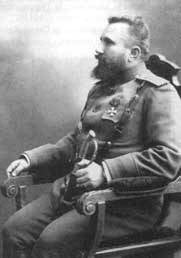
Ya. V. Safonov
With the height of 6 embracing and not attacking the 110 rifle regiment, the flank of the 15 was struck by a strong fire.
It took a new art strike, the influence of the reserve battalion in the battle line, interaction with the 6 rifle regiment - and a number of brutal bloody attacks. Colonel Ya.V. Safonov declined the doubly proposed reinforcement by the division reserve — and with the last pressure of the right-flank battalion seized the group of fortifications, destroying the enemy.
By 17 - 18 hours Division entrenched on the line 112.5 - 108 - 110 - 111 - 94.0, routed the enemy, mastering all lines of its fortifications and capturing officers 147, 4441 lower rank, guns 29, 26 machine guns, mortars and huge production.
The commander of the 16 Infantry Regiment, Colonel N. P. Biryukov, with the assistance of Colonel V. F. Piskorsky's division (who moved into the sphere of enemy fire), hit the Austrians on the southern edge of the Rozhansky Forest and at the crossroads. And one battalion overcame the Selischensky forest and attacked the Austrians to the west of the latter - three times. A hot battle ensued on the whole front, in which the battalions of the 16 Infantry Regiment, attacking valiantly, fighting off a series of counterattacks and skillfully maneuvering, overthrew the enemy, took prisoners to 1500, and in 12 hour went to Tung de Pona fortifications.
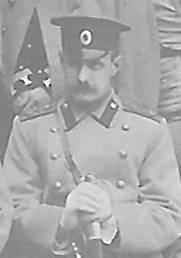
N.P. Biryukov
The division of Colonel V.F. Piskorsky openly, on the highway, accompanying the shooters, rushed to the stake. Teremenskoy.
With the 12 clock, the 4 rifle, having an 2 regiment in the battle line, launched an attack on the extraordinarily heavily fortified Lutsk tete-de-pon (several lines of trenches, and in front of them - from 3 to 16 rows of wire obstacles, a mass of concrete structures, etc. d.) on the front of the Bush - Teremno - Pidhaitsy. The shelves met by the strongest rifle and artillery fire were dug round.
In order to accelerate the decoupling, in 13 hours 20 minutes, the commander of the 1 brigade, Major General S. L. Stankevich, with the 15 rifle regiment and the 40-m mortar battalion (later the 3-th 11-th heavy division was also attached) Front of the 14 Rifle Regiment. S.L. Stankevich united command of units in his hands. The front of Colonel N. P. Biryukov was reinforced by the 18 heavy battalion.
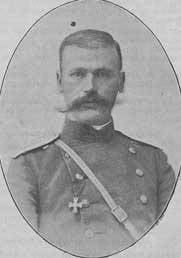
S. L. Stankevich
After artillery preparation in the 16 watch, Colonel N. P. Biryukov again moved the regiment to attack. With the support of 15, the company’s auto-bullet platoon rushed forward, but, met with deadly fire, lay down at the wire barriers.
But the frontal attacks of the 16 rifle rifle chained the forces and attention of the Austrians.
S. L. Stankevich transferred the 15 th Infantry Regiment to the count. Zimnik, deployed the troops of his group and after the powerful fire of all the batteries of the 1 division of the 4 rifle artillery brigade of colonel MF Shkadyshek in the 18 hour, attacked (with the support of the 6 rifle regiment) the enemy.
This skillfully directed and swift strike, which decided the fate of the battle for tete de pont, took the strongest fortifications of Gusche and Teremno - moreover, the 14 Infantry Regiment captured over 2000 prisoners. The Austrians fled in disarray to Lutsk.
By the end of May 25, Lutsk is in Russian hands.
4-I Iron Rifle Division of 5 days of bloody fighting took place 60 km away, and it spoils steel: 268 officers, 11300 lower ranks, 29 guns, 40 machine guns, mortars, mortar rounds and huge production (large rifles warehouses, bullets, shells, hand grenades , rockets, a lot of gas masks, barbed wire, steel shields, telephone sets, camping kitchens, packs, thousands of carts with weapons, entrenching tools, fodder and food, large stocks of equipment and other property - for example, 820 tons of coal).
Total division losses - 47 officers and 4329 shooters.
And it was the iron arrows, moving in the vanguard of the advancing Russian troops, seized the city, which gave the name of the whole operation - Lutsk, writing a new brilliant page in the chronicle of the victories of the Russian weapons.
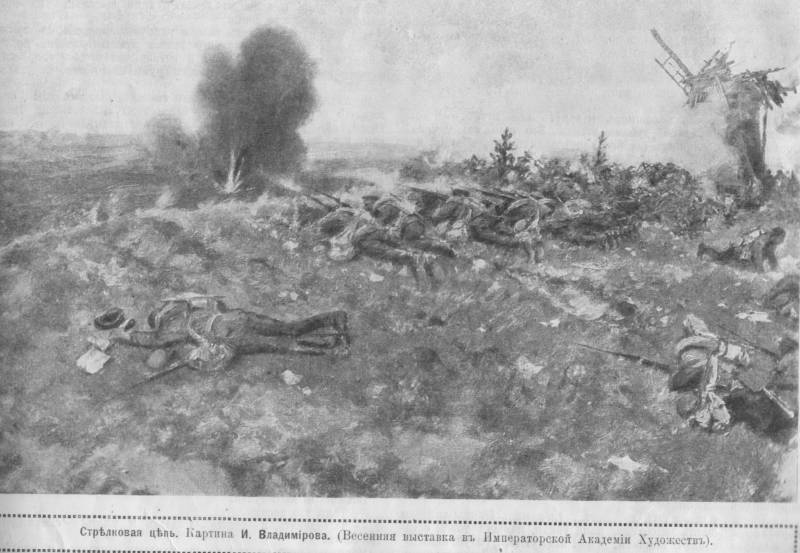
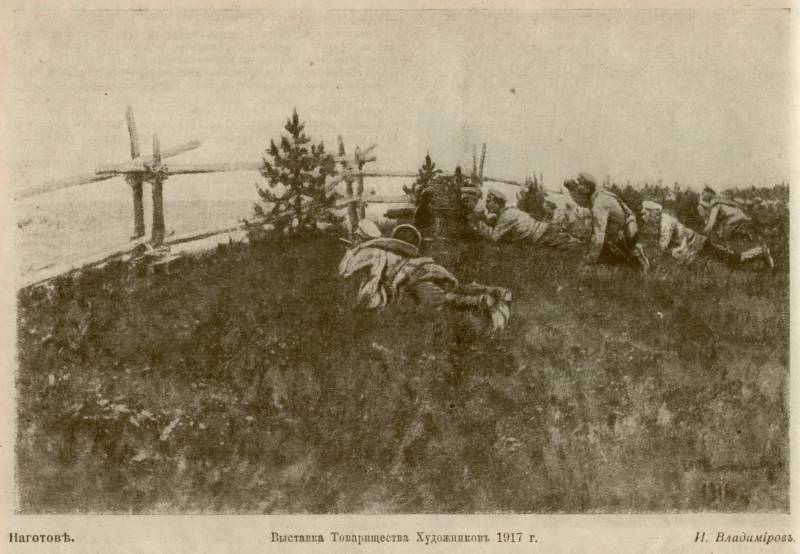
Information